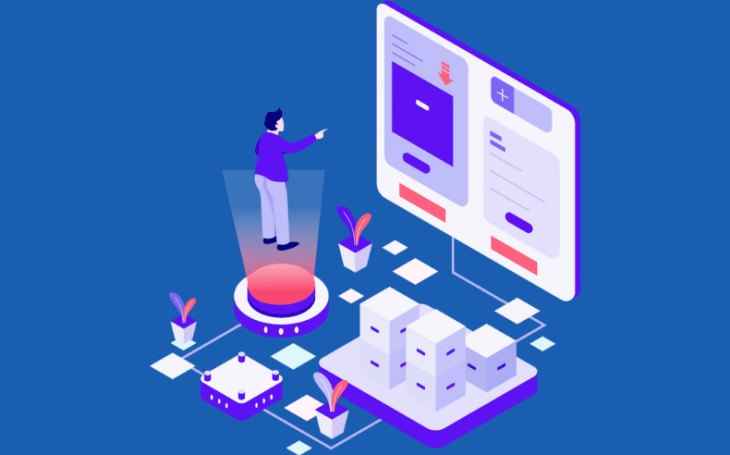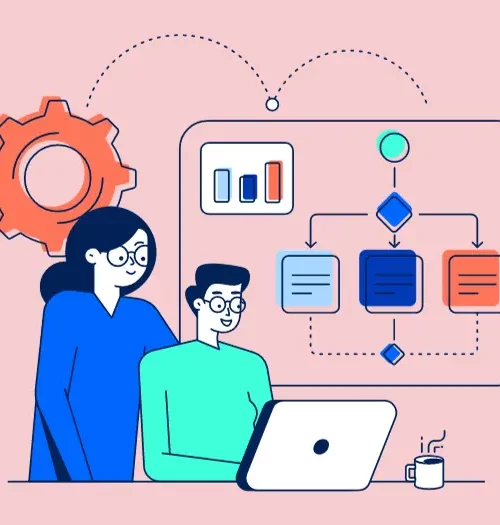10 Stages in the Loan Origination Process



Introduction:
Loan origination system (LOS) starts when the lending entity receives a loan request and continues all the way till the loan is funded or rejected.
LOS is important for lenders because it plays a significant role in allowing the lending organization to stand out of the competition by eliminating inefficiencies, reducing cost of customer acquisition and enhancing customer experience.
This guide will take you through every step of the loan origination process and will explain how LOS employs various techniques to overcome the drawbacks of the long paper trail process.
1. Collection of Data
A lender must know the level of risk they are subjecting themselves to, while granting a loan. Therefore, lenders start the loan origination process by collecting relevant data about the applicant.
In the early stages, the applicant (this includes walk-in, email, internet and off-site applications) is expected to present some identification documents along with the loan application form. The original documents are verified, and copies of the documents are submitted along with the application form.
Following this, a background check is performed to ensure that the applicant is not involved in any criminal case. The lenders also use other sources such as an external agent, the internet or common connections to analyze the character of the client, financial solvency, the ability to work with the amount granted as loan and so on. Information gathered through the credit report from any one of the credit bureaus is also used to derive relevant information.
With data about the borrower from various sources, the lender will focus on the following key parameters.
- Credit history – Information pertaining to the borrower’s recent application(s) for any form of credit or debit (hard enquiries), payment history on loans and credit cards, credit utilization ratio, derogatory activities such as bankruptcies, delinquent accounts and so on.
- Cash inflow: The debt-to-income ratio, stable source of income and income from other sources and investments are considered. In the case of commercial loan, the cash flow history and business projections are examined.
- Collateral: The collateral provided is examined to ensure that its value is equal to or greater than the amount requested as loan. The collateral documents that establish the proof of ownership are then verified the property declared as collateral is conformed as existent.
- Character: A subjective assessment of the applicant’s reputation plays a significant role in loan approval.
The main objective of collecting sufficient data about the loan applicant is to ensure that the risk of loan default is reduced to or closest to zero.
The challenge here is the amount of manual paperwork that goes into the process. There are multiple data points and several documents that need to be processed without delay. When LOS is deployed, the process is catalyzed, and chances of data error is eliminated.
2. Minimum Risk Assessment Criteria (MRAC)
When the lending organization has gathered all information required to assess a loan application, the MRAC (Minimum Risk Assessment Criteria) process is executed.
The factors included within this risk mitigation tool varies from one lender to another but is designed with a common goal – to lower the probability of credit risk. Here are a few examples of the common conditions applied through MRAC.
- Age of the applicant must fall between 25 and 55.
- Income must exceed the set limit.
- Pincode of the applicant must be serviceable.
- The borrower must not belong to the blacklisted category (individuals are blacklisted based on the their behavior and credit history)
Why do lending organizations need MRAC?
- Loan origination involves the time, effort and money of the lending organization. Having a predesigned tool in place, allows the lender to eliminate high risk cases in the very beginning.
- Since the MRAC is based on the experienced credit judgment and reasonable estimates outlined by experts, the tool can be considered valid for recognizing and measuring loan risks accurately.
By using the custom rule engine feature of the LOS, lending organizations can pre-configure their parameters and use them to evaluate the borrowers automatically. Again, LOS is an efficient and error-free way of evaluation when compared to the traditional methods.
3. Document Collection
Submission of documents along with the loan application is an important step in the initial stages of the loan origination process.
All loans sanctioned in the country by any lender will demand the submission of the two KYC documents:
- Proof of Identity (POI): Applies to any document that establishes Person A as Person A with the aid of a photograph. The list of acceptable proof of identity includes PAN card, Aadhar Card, Driver’s License, and Valid Indian Passport and so on.
- Proof of Address (POA): Includes government-approved documents that carry the address of the person, along with their name and with or without their photograph.
A more exhaustive list of documents that are accepted as PoI and PoA can be accessed here.
The documents that must be submitted along with the loan application depends upon the loan type and the borrower. Alternatively, banks can also use partner APIs to automatically generate loan documents that are relevant to loan applications.
For instance, a salaried individual applying for a personal loan is required to submit proof of identity, proof of address, salary statements for a minimum of the last three months, bank statement of the account linked to the employer and photographs.
In the case of a commercial loan, in addition to the POA and POI documents (of the business owner), 6 month bank statements linked to the business, documents supporting the ownership of the business, proof of business continuity, audited financials of the business, income tax statements (personal and business) must be submitted. In addition to these documents, business loans can require other permits and government-endorsed documents that are specific to the business facility.
Digitization of lending has allowed online submission of KYC documents, thus making it more convenient for lenders and borrowers.
You May Also Like:
Loan Origination – A Critical Step In Mastering The Loan Process
4. Credit Bureau Check
Every individual and every business in the country can be assigned a credit score. This credit score establishes the “credit-worthiness” of an entity based on their past actions and associations with lenders.
Currently, there are four credit bureaus in India (CIBIL, Equifax, Experian and CRIF) and each of them use their own proprietary algorithm and scoring system to assess the creditworthiness of an individual or an organization.
The credit score from any bureau ranges between 300 and 900 and a score over 750 is considered very good and increases the chance of loan approval greatly. A good credit score also gives more leverage to the borrower while applying for high value loans and while negotiating the terms of the loan.
Credit score of an individual depends upon factors such as credit repayment history, CUR (credit utilization history), current loan portfolio, time period of credit lines, credit inquiries made thus far.
For commercial loans, the credit score of a business is evaluated. This score depends mainly on repayment history, credit utilization (generally 30% or lower is recommended), company’s debt and time duration of credit accounts. Other factors such as negative cash flow, bounced cheques, loan defaults and negative customer feedback can all significantly impact a company’s credit score.
5. Loan Underwriting
Underwriting is a common term in the financial world. There is underwriting in insurance, banking and stock markets.
Loan underwriting is defined as the process through which a lender assesses the creditworthiness of the borrower and determines if a particular application is of acceptable risk. An underwriter from the lending institution uses various parameters like credit score, debt, income and value of collateral of the borrower to either accept or deny a loan application. It is not necessary that equal weightage is given each factor and one weakness may be offset by another strength.
Manual loan underwriting can take months to relay the final decision and can shatter hopes of potential borrowers after a long wait too. Another important setback in the underwriting process is the lack of sufficient information, leading to thin profiles of borrowers and ultimately the denial of loans.
Using technology to automate the underwriting process reduces its time period significantly and also aggregates sufficient information to present a better picture of one’s creditworthiness. Financial technology has allowed new-age lenders to disburse quick cash loans as well as build a more secure lending environment.
6. Field Visit or Video KYC
Site visits continue to be an important part of the loan process in order to minimize risks for the lender. The objective of a field visit is to ensure the borrower is in full capacity of loan repayment and has the right intentions in relation to loan repayment.
Site visits may not necessarily eliminate business issues but can warn lenders and make them more proactive about handling their loan portfolio.
During the site visit, the loan officer visits the borrower in his business premises to discuss matters related to qualification of the loan applicant (both educational and monetary), background of the business (in the case of a commercial loan), assets owned by the business as well as the applicant, overall cash flow and other active loans. This personal discussion helps the loan officer to capture a more realistic view of the business involved as well as the integrity of the applicant.
To tap into the real benefits of a personal meeting before loan sanction, the loan officer must have a clear understanding of the meeting objectives. On the other hand, the borrower must ensure that he/she is open to all enquiries and be prepared with the required documents to support claims.
Alternatively, earlier this year, the RBI legitimized the Video-based Customer Identification Process (VCIP) and this came as big relief for financial institutions that were looking to cut down on operational costs.
VCIP allows banks and other lending institutions to onboard customers via video KYC rather than pay a direct visit to their living or working space. This consent-based process will allow an officer from the lending organization to examine the customer’s identity through verification of documents and a series of Q&A.
There are several conditions as mandated by the RBI, in order to conduct a valid VCIP. Some of them include,
- Geotagging – live location of the customer will be captured.
- The video call is time-stamped too and must be conducted only with customers living in India.
- Specially trained officials (the reporting entity) alone can execute the process.
- The origin of the video call must only be from the domain of the particular lender and third-party sources are not allowed.
- The liveliness of the interaction is tested by asking questions and by letting the customer perform simple gestures such as waving a hand.
- The image of the PAN card is captured and authenticated and by using facial matching capabilities, the video image of the customer is matched with the image on the PAN card.
- Aadhaar authentication is also completed through video KYC.
- Customers are expected to carry the required documents (Pan card and Aadhaar) and a white sheet of paper with the writing material for signature verification.
- A well-lit room with a suitable mobile phone or laptop and a good internet connection (not through a proxy or VPN) are mandatory.
This real-time process reduces cost and slashes the turnaround time by a high percentage.
7. Loan negotiations
In many cases, lenders do not sanction the loan amount with the most acceptable interest rates, loan tenure period or other repayment terms. In other words, there arises a difference between the proposed loan request and the sanctioned loan payout. This leads to the discussion of the “terms” of the loan during this stage.
The lender and the borrower meet in person and negotiations are facilitated with relevant support statements from both parties. At the end of the discussion, the final terms of the loan are determined and mutually agreed upon. This is followed by the preparation of loan agreement documents.
8. E-mandate
E-mandate is a payment service that allows businesses in India to collect recurring payments from customers. The service, initiated by the RBI and NPCI (National Payments Corporation of India), is being used by SaaS businesses, content-related services like Netflix, retail businesses and most importantly by financial institutions for loan repayments and for insurance premiums.
The e-mandate process is 100% digital and follows the below steps.
- The customer fills in the mandate form through a link sent by the lending organization. Details pertaining to the customer’s bank, debit intervals and so on are discussed through this form.
- The lending organization then confirms if the customer’s bank is registered by the NPCI for mandate creation.
- After entering all details, the customer is then directed to a page where authentication of mandate by entering net banking credentials is completed.
- The customer’s bank then asks the customer for confirmation of the mandate.
- Once confirmed, the customer is directed to the website of the financial institution in order to check the status of the mandate approval.
Unlike the previously used ECS mandate (Electronic Clearing Service), the e-Mandate is 100% digital, takes not more than one day to be activated and requires only a one-time mandate (OTM).
9. Loan Contract Signing
Before the loan is disbursed, a loan contract or a loan agreement is established. A loan contract can be a complex document that concerns the lending as well as the borrowing parties. The document includes basic information about both parties and then delves into the specifics of the loan (such as transaction, interest and payment information). Additional details such as method of repayment, time frame for repayment, acceptable payment methods, interest rate (if variable or fixed) are all included.
In other words, a loan contract must be extremely clear and comprehensive and must be approved by both the lending and the borrowing parties to move forward.
10. Disbursement of loan
Once the documentation has been completed, the loan is disbursed by the lender. Loan sanction is often confused with loan disbursal. Loan sanction is the validated approval of funds from the lender. Disbursal, on the other hand, is the actual delivery of money (in one or more installments) after the loan is sanctioned. The amount disbursed is based on the loan agreement. The time taken for loan disbursement and the mode of disbursal are based on the type of loan availed and the lending organization.
Conclusion:
Irrespective of the loan type and the size of the lending organization, every loan application must followed these stages to reach fruition. The way in which a lending organization handles the origination system is characteristic of its efficiency and its ability to adapt to the dynamics of the industry. Lenders who are extremely focused, aggressive, strategic and embrace technology solutions like loan origination software (LOS) excel in the industry and are more likely to set a competitive advantage for themselves.
Frequently Asked Questions
What is a loan origination software?
A loan origination software is a system that enables lenders to automate, manage and simplify the end-to-end lending process starting from loan application to disbursement.
What is loan underwriting, and why is it important in loan origination?
Loan underwriting is the process by which lenders assess the creditworthiness of borrowers and determine whether to approve or reject a loan application. It's crucial in loan origination as it helps lenders make informed decisions about lending.
Related Post

Top 10 KPIs to Measure the Efficiency of Loan Origination Process
Introduction Loan origination is like a crazy rollercoaster ride for

Navigating Through The 2022 RBI Digital Lending Guidelines
Overview This article explores the unique compliance requirements that distinguish

Workflow Management – The Key to Efficient Loan Origination System
There are probably very few business functions that are as
- Email: [email protected]
- Sales Enquiries: +91 9080996606
- HR Enquiries: +91 9080996576
Quick Links
Resources
© 2024 LightFi India Private Limited. All rights reserved.
(Formerly known as Habile Technologies)
After smartphone penetration, people are not watching their SMS at all. They use SMS only for OTP related transactions. That’s it.
But What can a Lender see in your SMS after you consent to them?
Lender can see income, expenses, and any other Fixed Obligation like (EMIs/Credit Card).
1) Income – Parameters like Average Salary Credited, Stable Monthly inflows like Rent
2) Expenses – Average monthly debit card transactions, UPI Transactions, Monthly ATM Withdrawal Amount etc
3) Fixed Obligations – Loan payments have been made for the past few months, Credit card transactions.
It also tells the Lender the adverse incidents like
1) Missed Loan payments
2) Cheque bounces
3) Missed Bill Payments like EB, LPG gas bills.
4) POS transaction declines due to insufficient funds.
A massive chunk of data is available in our SMS (more than 700 data points), which helps Lender to make a credit decision.
#lendtech #fintech #manispeaksmoney